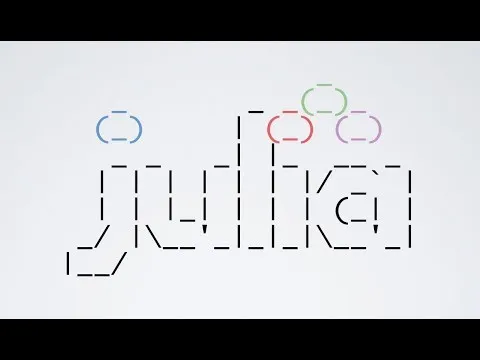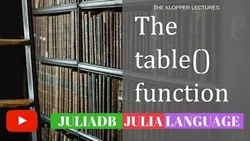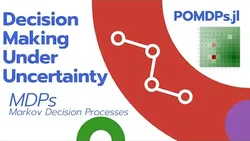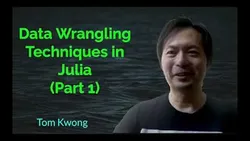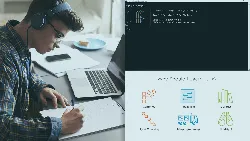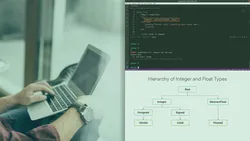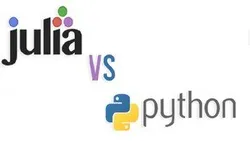Free Online Julia Courses and Certifications 2024
Julia is a high-level, high-performance programming language. It is suitable for data science, machine learning, and scientific computing. It is popular among developers, data scientists, and researchers. Courses related to Julia include data science, machine learning, and scientific computing. People who are interested in Julia should have a background in mathematics, computer science, and statistics.
Popular Courses
Julia's Queryverse is a powerful data science stack that provides a comprehensive suite of tools for data analysis and visualization. It is designed to make data science easier and more accessible for everyone.
Learn MoreThis tutorial provides an overview of the Julia programming language, version 1.0, for beginners. It covers topics such as data types, control flow, and functions, and is authored by Herriman & Verweij.
Learn MoreThis four-module course introduces users to Julia, a high-performance dynamic programming language developed specifically for scientific computing. With open source software, users can access Julia for applications in physics, chemistry, astronomy, engineering, data science, bioinformatics and more. The language can be used from the command line, program files or a Jupyter notebook, available from JuliaBox.com.
Learn MoreThis course introduces the Julia computer language, a powerful tool for medical statistical analysis. It covers topics such as distributions, the juliabox notebook, and coding basics. Learners will gain an understanding of how to use Julia to create programs for medical statistical analysis.
Learn MoreThis course provides an introduction to Julia programming language for machine learning. It covers topics such as installation and running in Jupyter Notebook, Julia basics such as strings and numerical operations, commenting, and Julia for data manipulation and visualization. It also covers machine learning algorithms and their implementation in Julia.
Learn MoreJuliaDB is a database for the Julia language. It allows users to make selections, reductions, and groupings to calculate descriptive statistics. It also enables users to join two tables and import csv files. Additionally, it provides a tutorial on gradient descent.
Learn MoreThis tutorial series introduces beginners to the Julia programming language. It covers topics such as how to get started, what to know before programming, variables, expressions, data types, functions, and more. It provides a comprehensive overview of the language and its features, helping users become proficient in Julia.
Learn MoreThis course covers the development of Julia packages, from creating a new package and repository to writing code, tests, and testsets. It also covers setting up CI, branches and PRs, code review, and external dependencies. Participants will gain the skills needed to create and maintain their own Julia packages.
Learn MoreThis course introduces Markov Decision Processes (MDPs) and Decision Making Under Uncertainty using POMDPs.jl. It covers topics such as MDP definition, Grid World environment, state and action spaces, transition and reward functions, discount factor, QuickPOMDPs, MDP and RL solvers, and a Pluto notebook. Students will gain an understanding of how to use MDPs to make decisions under uncertainty.
Learn MoreData wrangling is the process of transforming raw data into a usable format for analysis. Tom Kwong's course, Data Wrangling Techniques in Julia - Part 1, covers the Julia data ecosystem and the five-step workflow of data wrangling: reading, cleaning, tidying, analyzing, and visualizing. Through this course, participants will gain the skills to effectively wrangle data in Julia.
Learn MoreThis video, presented by Tom Kwong, is the second part of a series on data wrangling techniques in Julia. It covers two data sets: the Washington state youth suicide data set and the TIPS yield curve and inflation compensation data set. Tom provides helpful tips and techniques for working with these data sets, and encourages viewers to contribute to the accompanying GitHub repo.
Learn MoreThis course provides an introduction to the Julia programming language, covering the fundamentals needed to begin developing applications for Data Science, scientific domains, data visualization, parallel computing, and more.
Learn MoreThis course introduces the fundamentals of Julia, a high-performance programming language with a focus on productivity. Learn how to write your own Julia applications and take advantage of its unique combination of speed and ease of use.
Learn MoreJulia is a high-level, high-performance programming language designed for scientific computing, machine learning, and data mining. It offers a unique combination of ease-of-use and performance, making it an ideal choice for developers and data scientists.
Learn MoreLearn the basics of Julia - Future Python
Learn MoreThis tutorial provides an introduction to the Julia programming language, covering the basics of syntax and usage. It is designed to help beginners get started with Julia.
Learn More Frequently Asked Questions and Answers
Q1: What are the prerequisites for Julia training?
This Julia Training is suitable for anyone who is interested in learning a powerful and versatile programming language. While there are no prerequisites to take this training, having a basic understanding of the C language and Python programming can be beneficial in understanding the concepts of Julia programming. This training is ideal for software developers, data scientists, and anyone who wants to learn a new programming language.
Q2: What are the best books about Julia?
If you're looking for the best books about Julia, then look no further! Some of the top picks include A Deep Introduction to Julia for Data Science and Scientific Computing by Chris Rackauckas, The Julia Express (featuring Julia 1.0) by Bogumił Kamiński, and Programming in Julia (Quantitative Economics) - by Thomas J. Sargent and John Stachurski. All of these books provide an in-depth look at the Julia programming language and its applications.
Q3: Why should I learn Julia?
The team is thrilled about the interest shown in learning Julia and contributing to their project and community. Julia is a novel programming language that serves as a versatile tool for various purposes. It encompasses a wide range of applications, allowing users to develop virtually any software that can be built using other programming languages.
Q4: What is a mathematical function in Julia?
Julia offers a comprehensive assortment of mathematical functions and operators. The mathematical operations provided encompass a wide range of numerical values, such as integers, floating-point numbers, rationals, and complex numbers, wherever applicable definitions exist.
Q5: What Julia courses can I find on AZ Class?
On this page, we have collected free or certified 58 Julia online courses from various platforms. The list currently only displays up to 50 items. If you have other needs, please contact us.
Q6: Can I learn Julia for free?
Yes, If you don’t know Julia, we recommend that you try free online courses, some of which offer certification (please refer to the latest list on the webpage as the standard). Wish you a good online learning experience!
